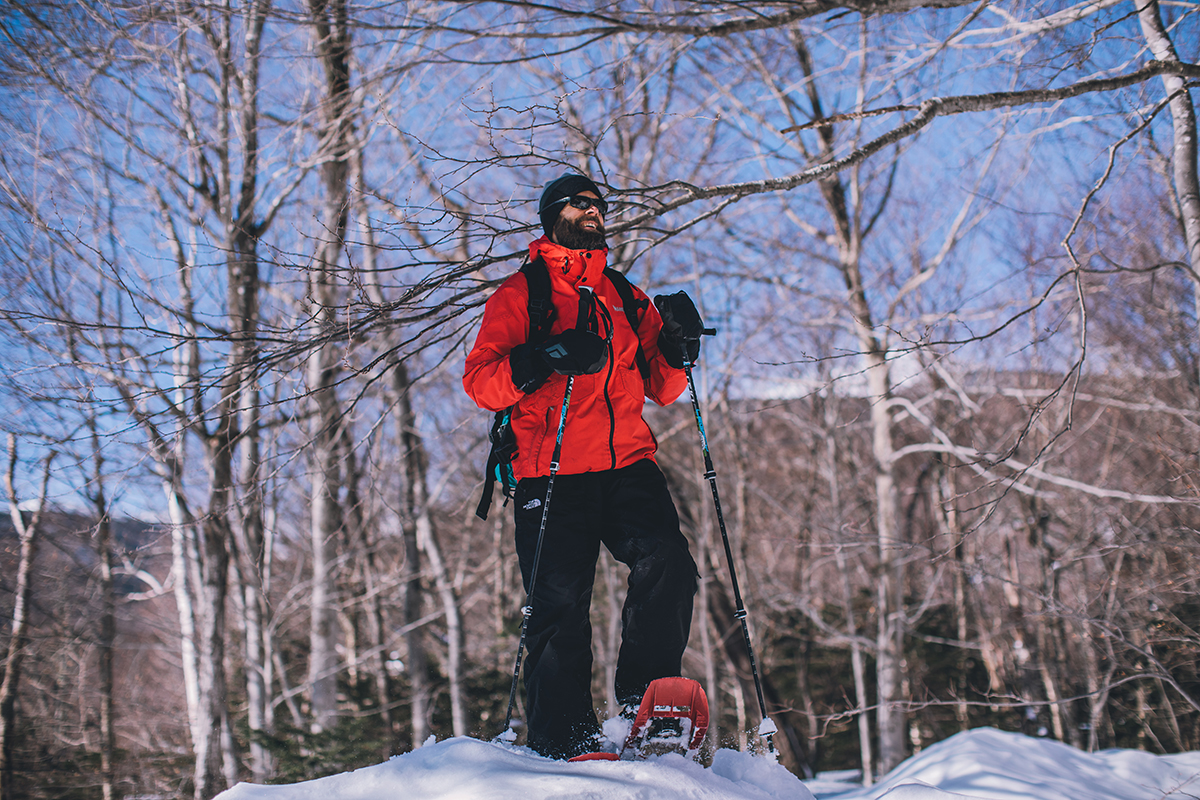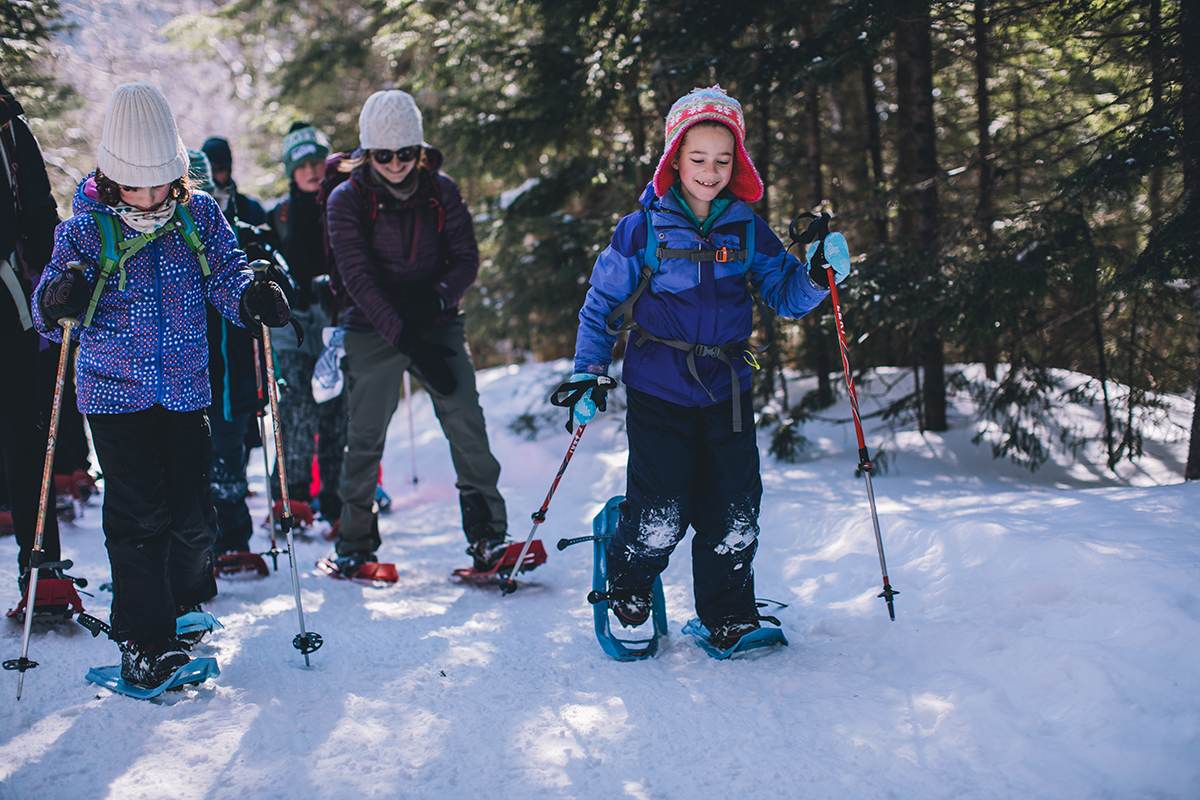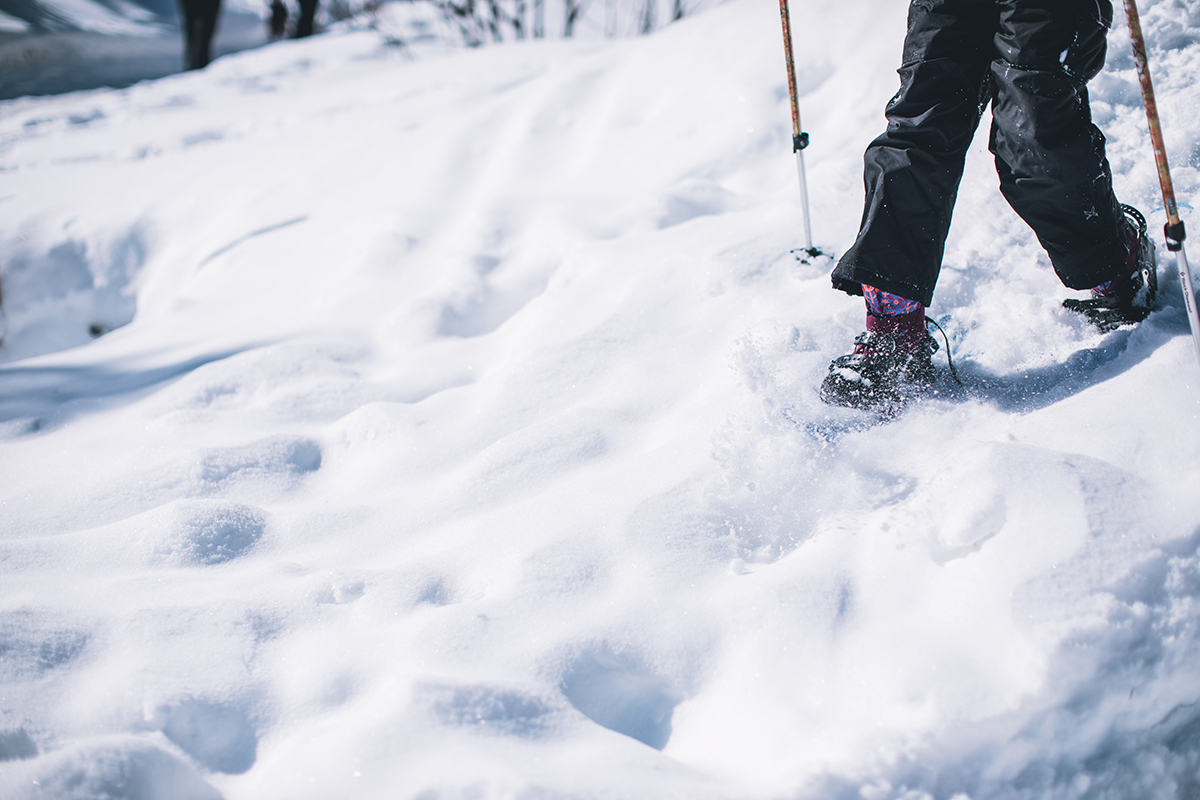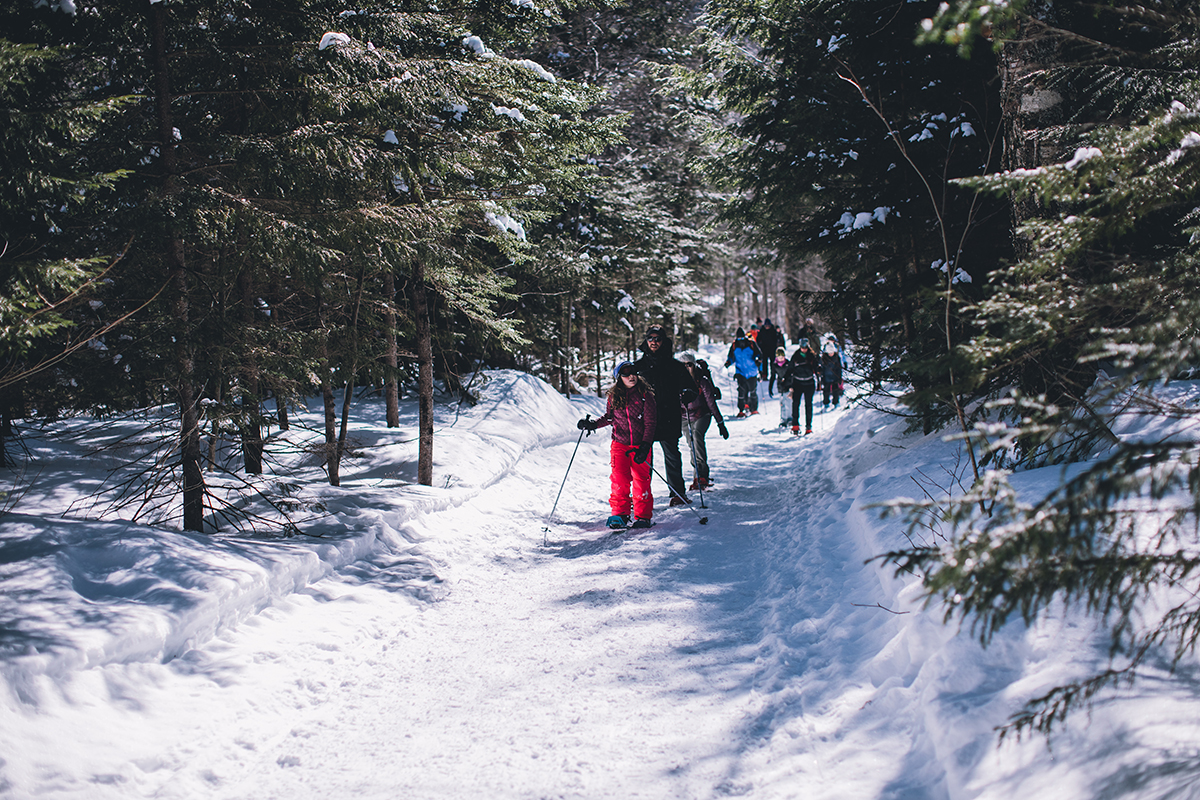

Snowshoeing is a fun way to get outside during the winter—it makes traveling in deep snow easier, opening the door to year-round hikes and walks. Snowshoeing is almost as easy as walking, but even so these tips and tricks will help any beginner get started.
Should I rent or buy my snowshoes?
If possible, rent or borrow snowshoes first so you can get used to how they work and which models you prefer. Some brands/models of snowshoes are lighter than others, so testing out a few types will help determine which you prefer. It’s also a good step to decide if you actually enjoy snowshoeing before investing in a new pair.
Where can I rent snowshoes?
If you are looking to get out close to home, check out your local gear store to see what their rental program is. If you are staying at an AMC destination like the Highland Center, Joe Dodge Lodge or our Maine Wilderness Lodges, you can borrow snowshoes free with your reservation—just ask the team at the front desk for more information when you arrive.
If I buy snowshoes, what should I consider before purchasing?
There are many different types of snowshoes, and height, weight, and shoe size all factor into the appropriate snowshoe size. Terrain and snow conditions are also important to consider, as some models are designed for steeper terrain. It’s best to get a recommendation from an expert before purchasing. You can read more about purchasing snowshoes here.
Do I need special boots to snowshoes?
Insulated, waterproof winter boots will be best for your comfort in the winter.


Do I need poles?
Poles are helpful and add stability for winter hiking. You can buy adjustable poles with removable winter baskets, which will be good for hiking year-round. Pole height depends on what you are most comfortable with, but in general they should be at a height where your arm is at a 90 degree angle when the poles are straight up and down.
What should I wear while snowshoeing?
Snowshoeing is an aerobic activity, so layering in wicking synthetic fabrics is important. Start off your activity wearing minimal layers so that as you warm up you don’t soak through. Bring extra layers including insulating layers for top and bottom as well as waterproof shell top and bottom, depending on the length of your outing and your destination. Hat, gloves, and balaclava are also important.
Is snowshoeing a good activity for kids?
Yes! Snowshoeing is good for all ages, as long as they are comfortable walking in winter boots. AMC recommends kids ages 2 and up try snowshoeing, with shorter outings for younger kids just starting out. You can read more about
Where should I try snowshoeing first?
Your backyard is a great place to start. Anywhere that you have access to untracked snow just to try it out. From there, you can try it out in a local park or nearby trail. Start off on flat terrain and work up to hills.


What are some basic techniques for snowshoeing?
Snowshoeing is not at all like skiing. All you need to do is walk without stepping on the other shoe—it is really that simple! Leaning forward helps with going uphill, as does really planting your shoe and putting your weight on it.
What’s kick stepping?
This refers to kicking your steps into the snow to get purchase on uphill terrain. Kick one shoe into the place you want to step a few times until a solid step is kicked in, and then step up. Repeat.
I’ve fallen and I can’t get up: what should I do?
Don’t panic!. If you’re on a hill, position your snowshoes across the hill (don’t point downhill). Try to get on your knees, and then step up. It will help to take pole straps off. If you’re really struggling, you can take the snowshoes off and then get up.


Is there trail etiquette I should follow?
The most important thing is to respect other hikers. In general, the snowshoer headed uphill has the right of way, so step aside to let them pass. Be sure to stay on the trail and follow Leave No Trace. And definitely don’t post-hole (walk on a packed down trail without snowshoes, effectively making giant holes in the treadway).
What about safety and hazards to look out for?
Be prepared for your winter hiking, including planning a route that is appropriate for you, and being aware of trail conditions and weather forecasts. Being prepared with the 10 essentials plus extra clothing, food, and water are all important for winter hiking. Cold injuries (frostbite, hypothermia) are possible from snowshoeing, and prevention is key. Keeping warm, dry, hydrated, and eating enough calories are all important for prevention of cold injuries. Route finding can be a challenge if it’s just after a snowstorm, so pay attention to signs and trail markers and know where you are going. Snowshoes aren’t great on glare ice, so save your outing for another day if there’s been a lot of rain/freeze activity. Don’t cross lakes, rivers, or ponds on snowshoes even if they look frozen.
Should I take a lesson?
If you are interested in working more with an expert to get comfortable with snowshoes in varied terrain, a lesson or guided hike is a good option. You can join AMC on one of many snowshoe excursions offered each year—check out activities.outdoors.org to sign up today.